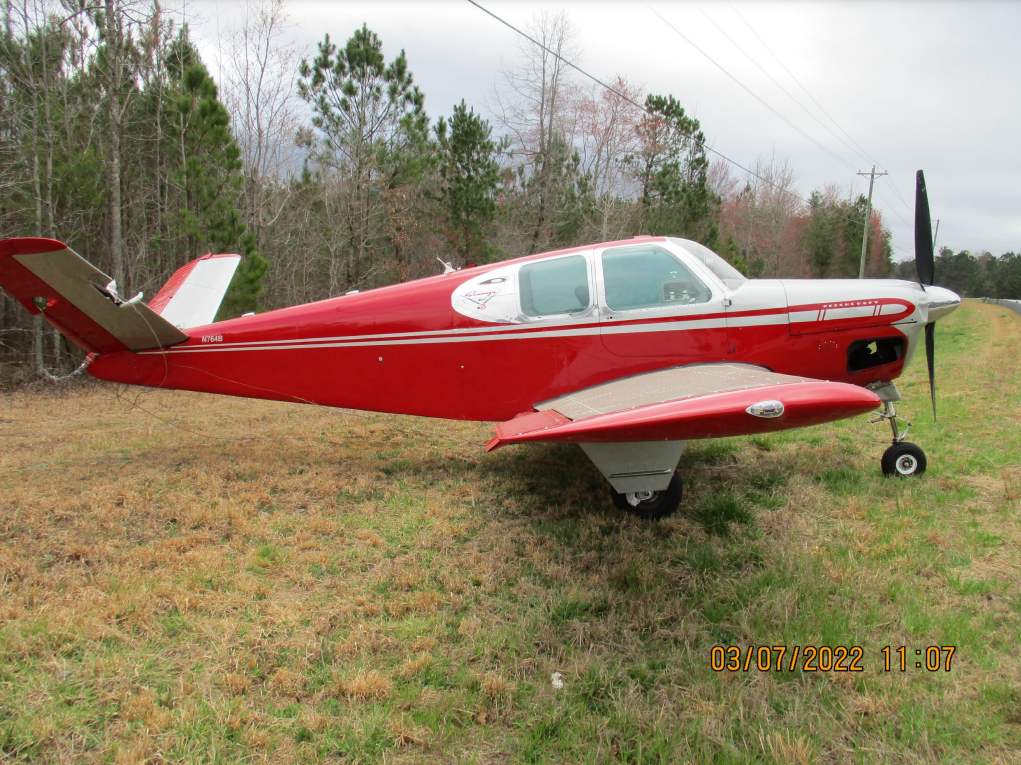
ASN Wikibase Occurrence # 345770
This information is added by users of ASN. Neither ASN nor the Flight Safety Foundation are responsible for the completeness or correctness of this information.
If you feel this information is incomplete or incorrect, you can submit corrected information.
| Date: | Sunday 6 March 2022 |
| Time: | 10:15 |
| Type: |  Beechcraft A35 Bonanza |
| Owner/operator: | Private |
| Registration: | N764B |
| MSN: | D-1772 |
| Year of manufacture: | 1948 |
| Total airframe hrs: | 5212 hours |
| Engine model: | Continental E185 |
| Fatalities: | Fatalities: 0 / Occupants: 2 |
| Aircraft damage: | Substantial |
| Category: | Accident |
| Location: | Waco, GA -
 United States of America United States of America
|
| Phase: | En route |
| Nature: | Private |
| Departure airport: | Huntsville International Airport, AL (HSV/KHSV) |
| Peach State Aerodrome, GA (GA2) | |
| Investigating agency: | NTSB |
| Confidence Rating: |
On March 6, 2022, about 1015 eastern standard time, a Beech A35, N764B, was substantially damaged when it was involved in an accident near Waco, Georgia. The commercial pilot and passenger were not injured. The airplane was operated as a Title 14 Code of Federal Regulations Part 91 personal flight.
The pilot reported that during the cross-country flight, the engine began to lose power and as he attempted to regain power, he noted a decrease in fuel pressure. The engine then lost all power, and the pilot made a forced landing on a road. Postaccident examination of the airplane found that the aluminum fuel line from the fuel indicator to the carburetor had ruptured. Additionally, minor corrosion was present around the ruptured area. Based on this information, it is the likely that this corrosion ultimately resulted in the rupture of the fuel line and loss of engine power. Additionally, the airframe maintenance manual prescribed that all fuel lines should have been inspected during the airplane’s most recent annual inspection, which had occurred 8 months and 22 flight hours prior to the accident. Had the corrosion been detected, and the fuel line replaced at that time, it is likely that the loss of engine power would not have occurred.
Probable Cause: The failure of the fuel pressure indicator line due to corrosion that was not detected during the last annual inspection, which resulted in a total loss of engine power.
Accident investigation:
 |
|
Sources:
NTSB
https://www.flightaware.com/live/flight/N764B
https://cdn.jetphotos.com/full/6/18914_1547684633.jpg (photo)
Location
Images:

Revision history:
| Date/time | Contributor | Updates |
|---|---|---|
| 21-Sep-2023 02:06 | Captain Adam | Added |
Corrections or additions? ... Edit this accident description
The Aviation Safety Network is an exclusive service provided by:


 ©2024 Flight Safety Foundation
©2024 Flight Safety Foundation